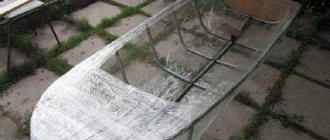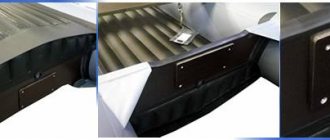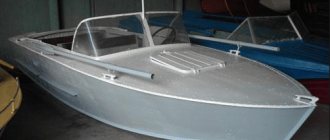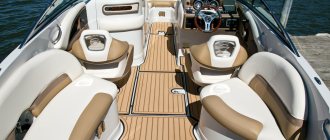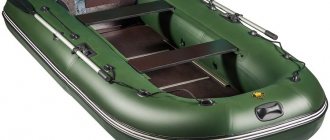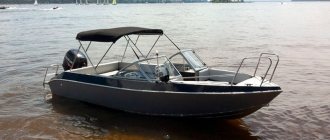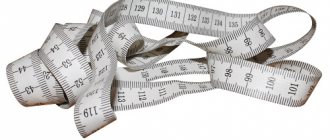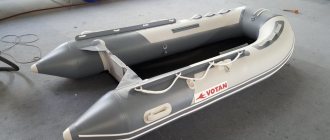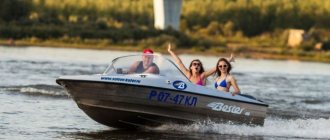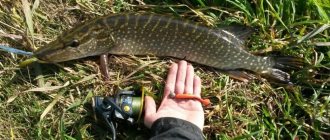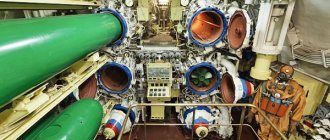Content
- NDND and payols. Reviews from real users
- Pros and cons of NDND and payols
- Video about the difficult choice between NDND and payol
- Where else can you look for answers to questions?
Friends, let's talk about choosing a boat. NDND or payols - this is the question we want to address today. Some say that an inflatable bottom is the best choice today, others believe that it is too early to write off floors and in many ways they have their advantages. And in order not to go too far, let's look at a specific situation that we took from our forum.
NDND and payols. Reviews from real users
In order to answer most questions, we took quotes from our forum.
User KAPITANN is interested in: Hello! I ask for your help in choosing a boat. I decided to buy a PVC boat with a transom. In the future (I hope soon) I will purchase a motor from 5 to 8 l/s (as finances allow). Please advise what length of boat to take, with or without a keel. You may have to row for a while. They say it’s difficult with a keel and oars without a motor. If it's not difficult, please advise. For six years I swam on an elastic band and I don’t know anything about PVC, especially with a motor. Thanks in advance!
To which Vlad40 replies: Welcome! If the motor is 5-8 hp, then definitely a keelboat! It is better to take a boat with such a weak motor from NDND (they are a little faster than sailboats with the same motors - this is especially true if you have a low-power motor), if the budget is very limited, then there is an appropriate choice, for example - Flagman-320, Reka-310-340, Solar SL 330-350 (light series). All these boats are easy to assemble and run normally with low-power motors (up to 10 hp).
And Sergei_L has a more specific opinion: If you need a boat for boating - NDND, for fishing - a payolka, if you swim along rivers - a punt, if there are large areas of water - with a keel, if you fish alone, a 320 payolka is enough, you can do it together, but without a big one load and with an 8 hp engine, for just relaxing with the family - NDND 350.
And here in front of us is a man who, on the one hand, is advised to use a boat with NDND, and on the other hand, is told that he should use a solder for fishing. Let's try moving to another forum thread and see what we can find about this. What do other users think?
AkaTornado’s opinion about boats with NDND: At the beginning of the season, I was puzzled by the purchase of a boat, in fact, I already had one boat - Aquasparks 400 with payolas, I wanted a 360 boat with a 9.9 engine. I scoured a bunch of information on the Internet, talked to people who have NDND, on the water I talked directly with the owners of an inflatable bottom - everyone shouted with one voice that NDND is the best option. What there were doubts about was whether it would be possible to stand in it on the water (would it be as comfortable as on floorboards); everyone insisted that there was no difference. And then one fine day a Compass 380 with NDND under Merck 9.9 appeared in our company. In fact, almost what I wanted - happiness knew no bounds, that now I will personally experience the happiness of owning this unit. We were going on boat rides, so we swapped boats right on the water.
Well, I found myself alone in the boat and... I realized that I would never take the NDND! It feels like you are sitting in an ordinary inflatable boat, your legs are jumping on the waves just like the boat itself. I got up, almost threw myself a couple of times and decided not to try again. During the short time I was in this damage, I realized that you were sitting much higher than in a floorboard boat, as if you were about to fall out) I was on the plank for about 20 seconds - the boat was on end, the whole thing was shaking, some kind of horror) For myself, I made a 100% conclusion NDND is not for me, Payols rule!.
And here’s what Borodyaga : I have a boat for multi-day fishing trips. In other words - payolka. Answers all requests. Jig while standing, relieve yourself from the transom, shmurdyak on the bottom in a dry place (possible water is always under the floor), legs do not go numb in a sitting position. Lucky that the size is small, so assembly is quick and easy. I assembled 360-380 solder kits, those with composite stringers (2 per side) - this is a real hemorrhage. So, if you take it, it will be a small one. There is no doubt that for one-time trips without overnight stays, the mattress is more comfortable. Conclusion: it’s too early to bury the payolka, but it’s better to have two boats.
Let's go back to where we started. Sergei_L about the choice between NDND and payols: All my boats are soldered, I don’t see any problems with carrying separate sets (skin and payols), assembling a boat takes maybe 10-15 minutes longer than NDND, and only if they have a powerful pump. Why I don’t need NDND: A boat for one 320-330 with an inflatable bottom, although lightweight, has a small and shallow cockpit and is unstable for standing fishing. 360-380 already have a decent weight, which you don’t want to mess with alone, and the assembly will take longer than the 320th solder, and in the case of fishing together, the weight doesn’t matter, but in the 360 wrap it’s more comfortable both in terms of fishing and placement of equipment and junk, this is already starting to approach hull boats. We take a 290 boat with a mounted transom for small rivers, slowly rumble along some Kargat river and carefully tip, twitch, jerk, well, why is there a NDND here, only payolas.
The advantage is in the speed of assembly, a very dubious argument, we assemble for 30-45 minutes, and fish for 10 hours, comfort in fishing is more important. By the way, I don’t know why people suffer from installing stringers, well, no problems at all, just none at all, maybe they pump them up first and then insert them? And the surface does not play a special role.
Vlad40 : The choice varies. Choosing a newbie is one thing. Choosing both types of summoner is different. Someone simply doesn’t have the money to buy NDND, so he will buy a cheap solder, and then he will “whistle” to everyone, saying, I don’t need your NDND for free... Or, for example, just a person - a theorist who confidently believes that NDND - this is a soft mattress that you cannot stand on - there are others like that. “I haven’t eaten oysters, but I know it’s not tasty!” (With)
I would pose the question differently. Who, after NDND, switched back to payolas? Almost all NDND users are former shareholders, i.e. They can draw conclusions not from other people’s words, but from their own experience. But there are no such people (out of almost a hundred boatmen I know) who had an NDND boat and then bought a solder. There are familiar users who have both types of boats, including myself. Because in some conditions, payolka also has its advantages. Alas, the trend in recent years is this: those who have actually used (personally used, assembled, disassembled, and not just ridden a couple of times on someone else’s under-inflated NDND boat) an NDND boat after soldering, choose NDND when changing the next boat. Few people like to fuss with a “plywood woodpile.” But the PVC boat is precisely what serves for quick and easy assembly and disassembly.
drivernsk asks:
- How comfortable is it to stand in a boat with NDND? I fish mostly with my spin.
- What happens if the bottom is broken, for example, if it hits a snag? As I understand it, there won’t be anything to expand the cylinders with, unlike the foam pads, and will the cylinders fold up or not?
- The weight of the skin, for example, for Compass 350 is 37-38 kg, and the entire set is 49-50 kg. The extra 13kg is it the oars and seats or something else?
- The depth of the cockpit on the NDND is less than on the solder, does this cause any inconvenience?
DMG replies:
- You can stand, but it's worse.
- Nothing will happen if the bottom is broken. The cylinders with the transom form a closed loop that will hold the boat. Unlike a soldering iron, there will be no water in the cockpit.
- The total weight is with bags, cans, pump, everything that is included in the package.
- Not always, and not all boats with NDND have a shallow cockpit. Examples from the 350s: Compass 350S - cockpit depth 38cm, Hydra 350 - also in this area. There is simply no need for higher levels anymore.
User 1ejik1 is interested in the moment of washing a boat with NDND: I am very concerned about the cleanliness of the bottom, how easy is it to wash the NDND?.
Warrior : It’s very easy to wash a boat with NDND, at least well-made models. Regular manufacturers offer removable cockpit mats, or boat owners themselves cover the bottom with linoleum. In a well-made boat, washing consists of rinsing it with a bucket and turning the boat over to drain off any remaining water and sand particles.
Vlad40 : Actually, I’ll tell you my story. Like most, I started with a payolka - it was Mnev’s “Cayman”. NDND were really rare back then, the quality (due to the lack of competition) was low. And the main problem is that there is no way to compare both types of boats on the water! Everyone has only pyolkas. What is the objective opinion here? Like, since most of them have pyolkas, then this is correct and says everything? Of course not. This doesn't mean anything. We have the majority of Zhiguli cars on the street, but everyone understands that this is not at all an indicator of the right choice. So, as soon as I managed to try (that is, not only ride, but also assemble and disassemble) the NDND Solar, then all my doubts immediately disappeared. What the hell are payolas? If the LPND is normally inflated (0.3 atm), then standing on it is no worse than a floorboard. There are a lot of undeniable and very important advantages for a portable boat - a self-draining cockpit (even in static conditions), simple cleaning and washing, simple assembly/disassembly, soft ride on waves, and most importantly - the absence of difficult fiddling with plywood products, as well as the removal of water and dirt from under the floors. In general, after a couple of weeks I already went to test drive my new Solar. Then the NDND “Compass” appeared. But in fairness, we must admit that NDND does have the only drawback. This is a higher center of gravity. Many will need to get used to this reality. Although most of my friends got used to NDND after a couple of fishing trips. Moreover, at the first “test” they swore, saying that it’s better on the floor. On the second attempt they were already silent, and after the third trip they got used to it and were quite happy. Now you can’t drive them to the floors with a stick. My opinion is this - if you choose a single (universal) boat, of considerable size (320 and above), used for fishing/cruising, and there is financial opportunity, then naturally it is NDND!.
Ipsum2003 : In terms of comfort, ease of use and seaworthiness, boats with NDND have gone far ahead of the pads! In 2012 I bought myself a Solar 350 and still use it.
So, friends, let's summarize. To do this, we have collected the pros and cons of both types of PVC boats in one table.
PVC boats with inflatable bottoms are gaining increasing popularity in the small boat market. Having appeared relatively recently, the inflatable bottom of PVC boats turned out to be a very successful invention, although not without its drawbacks, and some manufacturers switched to equipping their vessels with just such a bottom. There are two options for such a design element - high and low pressure bottom.
Removable high and low pressure inflatable bottom
The article will focus mainly on a low-pressure inflatable bottom (LPND), however, some manufacturers equip their PVC boats with a removable high (or low) pressure bottom. Structurally, this is a completely different approach to the formation of the bottom, although there are models in which a removable bottom provides deadrise to the bottom of the boat. Most often, the removable bottom is a substitute for hard flooring.
If an inflatable low-pressure deck can be compared with a regular swimming mattress, then a low-pressure inflatable deck is a durable deck that is not subject to compression under the weight of a person. The high-pressure deck is also called AirDeck, that is, air deck.
Removable air pads have their advantages and disadvantages. Their advantages can be called: slightly less weight compared to plywood or aluminum slates, ease of assembly and thermal insulation. The disadvantage is low rigidity compared to the same hard floors.
Integrated inflatable bottom
The inflatable bottom, made as a monoblock with the PVC sides of the boat, forms not only the deck part, but also the bottom, thereby affecting the performance. There are also two types of such designs: with a high-pressure bottom, which are abbreviated VIB, for example, manufactured by Suzumar, and with a low-pressure bottom, manufactured by Sonata. This design is most often called a “NDND boat.”
Manufacturers, with the help of such structures, can add deadrise to boats, and the longitudinal seams, which provide rigidity to the bottom, have the properties of stiffening ribs for the entire boat, and also serve as a kind of longitudinal steps that ensure the stability of the boat on course.
Design features of the low pressure bottom
The inflatable bottom of PVC boats consists of two layers of material either glued together with longitudinal seams or connected by fabric partitions. To impart deadrise to the bottom, the partitions have unequal heights, increasing towards the longitudinal axis of the boat. Some models have a separate solid keelson.
When inflating the bottom of the LP, bulges of the chambers inevitably arise, both from the deck and from the bottom. While the bottom humps can play a positive role, the uneven floor in the cockpit is more of a drawback. Most often, the inflatable bottom is a single pressurized compartment with a single valve.
Advantages and disadvantages of NDND boats
Advantages:
- Softening the blows. In any case, using boats involves walking on a small wave, as a result of which vibration will always be felt. In this case, the bottom will take the brunt of the impact.
- Assembly. Of course, pumping will take some time, but it is still easier to do than assembling a folding floor or installing a hard inlaid bottom.
- Abrasion resistance. Low pressure bottom beads are less susceptible to this than solid decks.
- Thermal insulation. This quality is manifested not only when used on water. If you need to spend the night on the shore, then the inflatable bottom will serve as a good mattress.
- And most importantly , if the main cylinders of an inflatable PVC boat are punctured, the bottom will serve as a kind of emergency compartment, allowing you to get to the shore on it.
Flaws:
Taking into account all the advantages of this type of bottom, we should not forget about the limitations faced by owners of boats of this design. The inflatable bottom cannot be structurally at the same level as the level of sea water
This affects the following:
- Reducing the working area of the cockpit.
- Raising the center of gravity of a person standing in a boat.
- To maintain balance, you will have to make additional efforts due to the lack of full rigidity.
How to choose a PVC boat with low pressure inflatable bottom
Before purchasing, you need to weigh all your options:
- Where will the boat be used?
- How many people will be fishing?
- Possibility of delivery.
In principle, the use of PVC boats with NDND is possible on any body of water. The durable material used in manufacturing is not subject to rapid wear and tear and is not susceptible to mechanical damage. On large boats it is possible to use motors with the installation of rigid transoms.
If we talk about transportation, then the recommendations here relate more to the requirements of the capacity of the car trunk. The fact is that an assembled three-seater boat is a rather large bag plus an inflatable bottom of the same size. This luggage will not fit in all cars.
There is no consensus that an inflatable bottom or a hard one is better, and cannot exist. The presence of advantages and disadvantages of such a design finds both its adherents and people who are not satisfied with NDND.
buy boats with low pressure floors in our online store.
Pros and cons of NDND and payols
| Bottom type | Advantages | Flaws |
| NDND |
|
|
| Payola |
|
|
As for the rest, the choice is yours!
Comparison of bottom types of PVC boats. Plywood, Aluminum or NDND? Pros and cons of each option.
Friends, we have another article that we hope will be useful for you! Today we will analyze and compare popular types of bottoms for inflatable PVC boats - Plywood bottom, Aluminum bottom or Low-pressure inflatable bottom.
For comparison, let's take the segment of popular inflatable motor boats
330-360 cm long, and our comparison will be fair for boats of this length.
Advantages of plywood slate
Price.
Among the options under consideration, this is one of the most affordable.
Maintainability.
In case of damage, the plywood slate elements can be replaced separately.
Stability of the craft.
If it is important to fish while standing, then the prefabricated floor will be a solid support under your feet.
Disadvantages of plywood slate
Labor intensive assembly.
To prepare the boat, it is necessary to connect the flooring elements together and secure them with stringers. With sufficient skill, assembling the paoil takes no more than 5 minutes.
Swelling of plywood.
As a rule, boats from trusted suppliers are made from special laminated plywood, which is not susceptible to moisture. During short-term use, additional impregnation will prevent the plywood from picking up moisture, but if your boat is on the water or in the open air for a long time, then there is a chance that the plywood will still absorb some of the moisture. Consider this fact before packing your boat for long-term or winter storage.
Advantages of aluminum pyol
Does not absorb moisture.
You can store your boat outdoors without worry.
Not subject to rotting.
Aluminum is not afraid of mold and does not rot.
Abrasion resistant.
Under a tank or hard things on other types of bottom, “rubbing” may appear over time, and aluminum is better able to withstand such long-term exposure.
Disadvantages of aluminum pavol
Price.
As a rule, they are 5-15% more expensive than analogs with plywood slats and the price is comparable to NDND boats.
Assembly.
Everything is similar to the previous point described about plywood flooring.
Advantages of NDND
Easy to assemble.
There is no need to join the flooring elements together. And if there is a pump, assembly comes down to switching the hose and installing seats with oars. The boat will be ready faster than its analogues.
Speed indicators.
When comparing boats of a similar design, options with NDND have greater speed.
Disadvantages of NDND
Set weight
. If payol boats fit into two bags, and they are easier and more convenient to carry, then the entire configuration of the NDND boat fits into one bag, and it will be heavier than individual bags of payol boats
